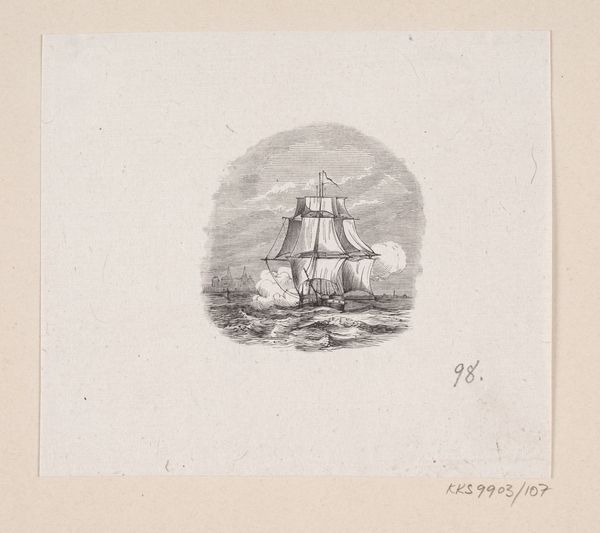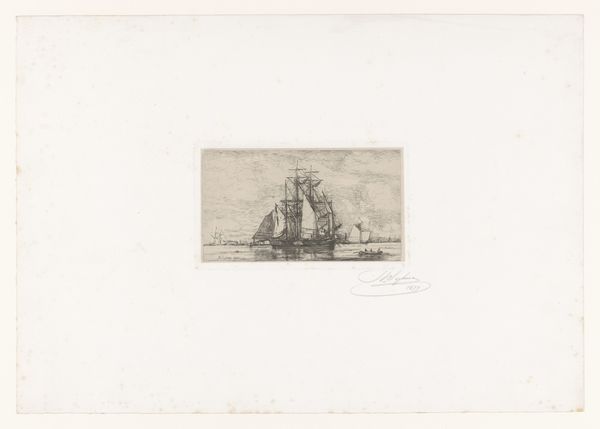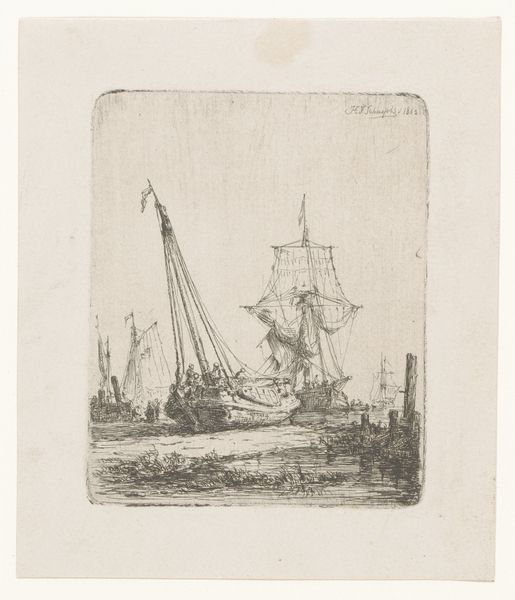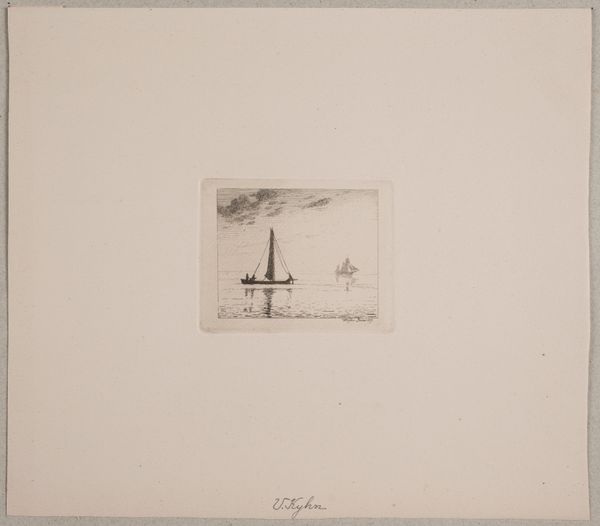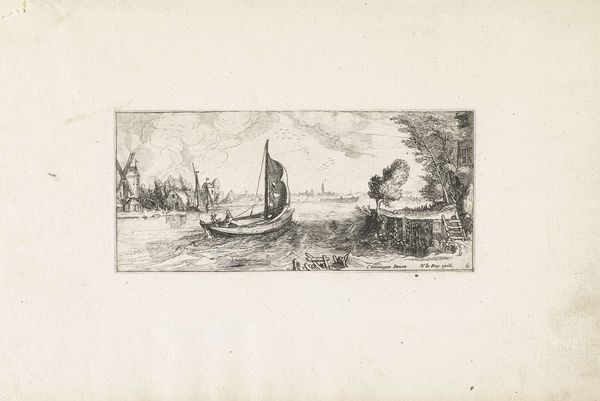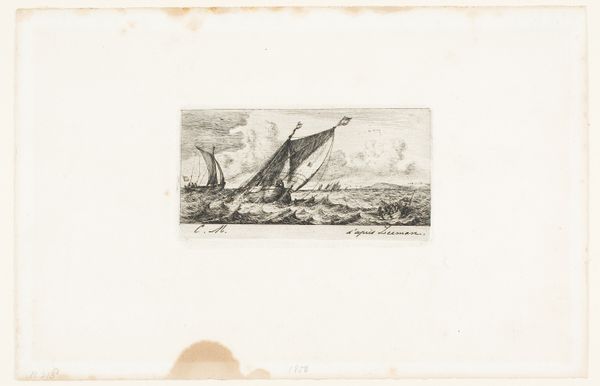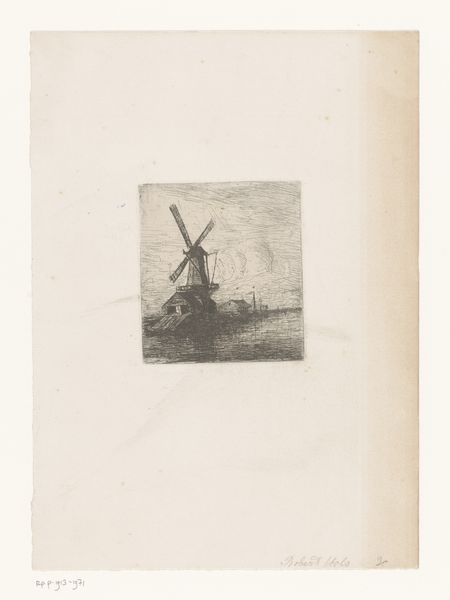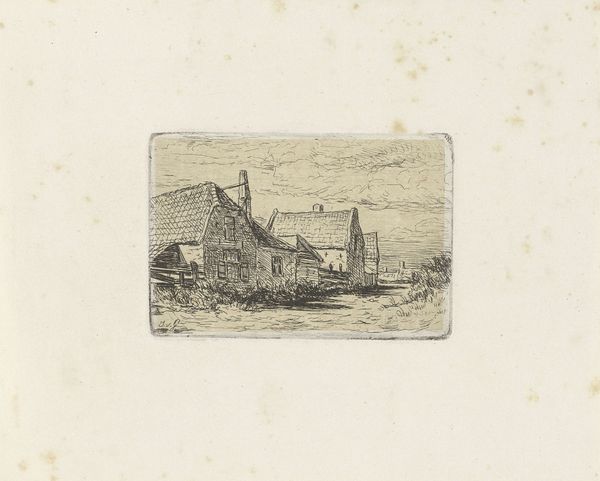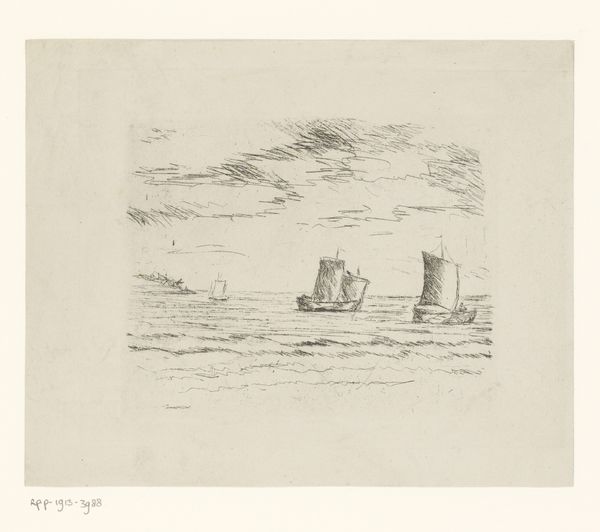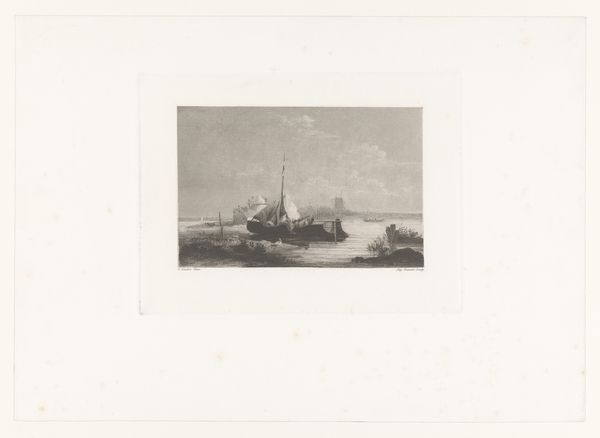
print, etching
#
dutch-golden-age
# print
#
etching
#
landscape
#
realism
Dimensions: height 39 mm, width 42 mm
Copyright: Rijks Museum: Open Domain
This etching of a wooden windmill was made by Eugène Verboeckhoven, and is a great example of the kind of image that was starting to circulate in the 19th century. The etching process involves covering a metal plate with a waxy ground, then drawing through it with a needle to expose the metal. The plate is then immersed in acid, which bites into the exposed lines. This painstaking work gives the print its characteristic fine lines and textures. The print vividly captures the windmill's materiality, from the rough-hewn planks to the intricate latticework. Windmills like this one were essential to the Dutch economy. They were used to grind grain, saw wood, and pump water, all vital tasks that underpinned the nation's prosperity. This image reflects the labor-intensive processes that drove the pre-industrial economy, a stark contrast to the emerging mechanization of the era. The image's intimate scale invites us to appreciate the skilled craft that went into its production. It blurs the lines between fine art and functional representation, reminding us that even seemingly simple images can carry complex social and economic meanings.
Comments
No comments
Be the first to comment and join the conversation on the ultimate creative platform.


